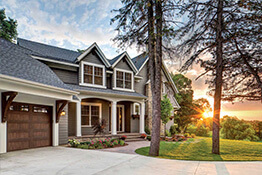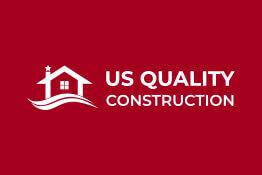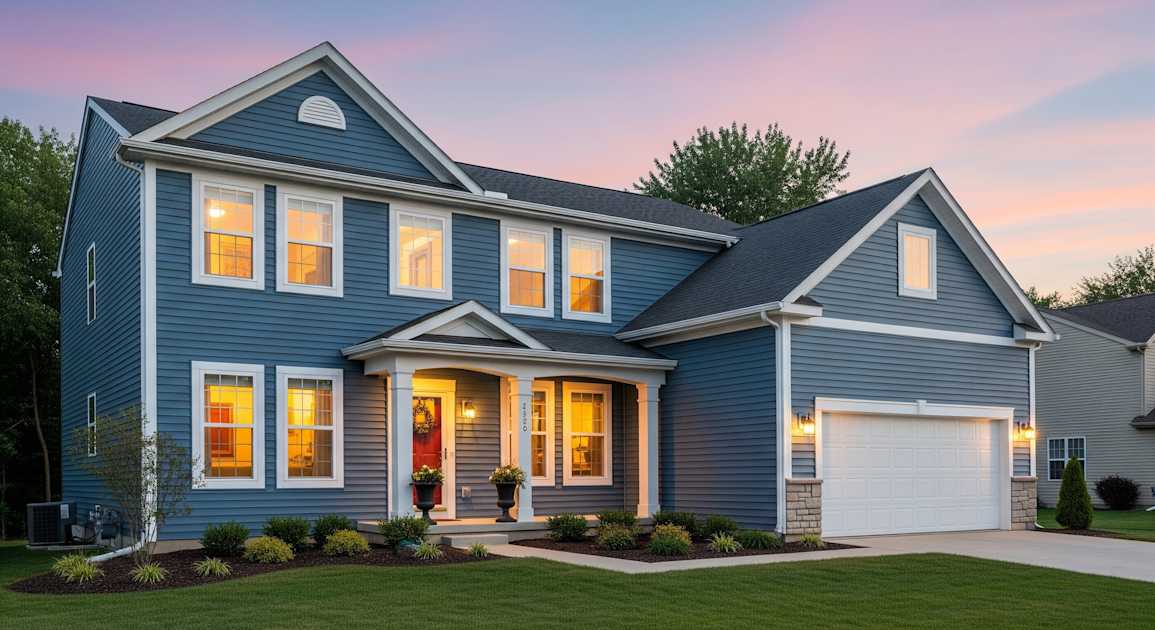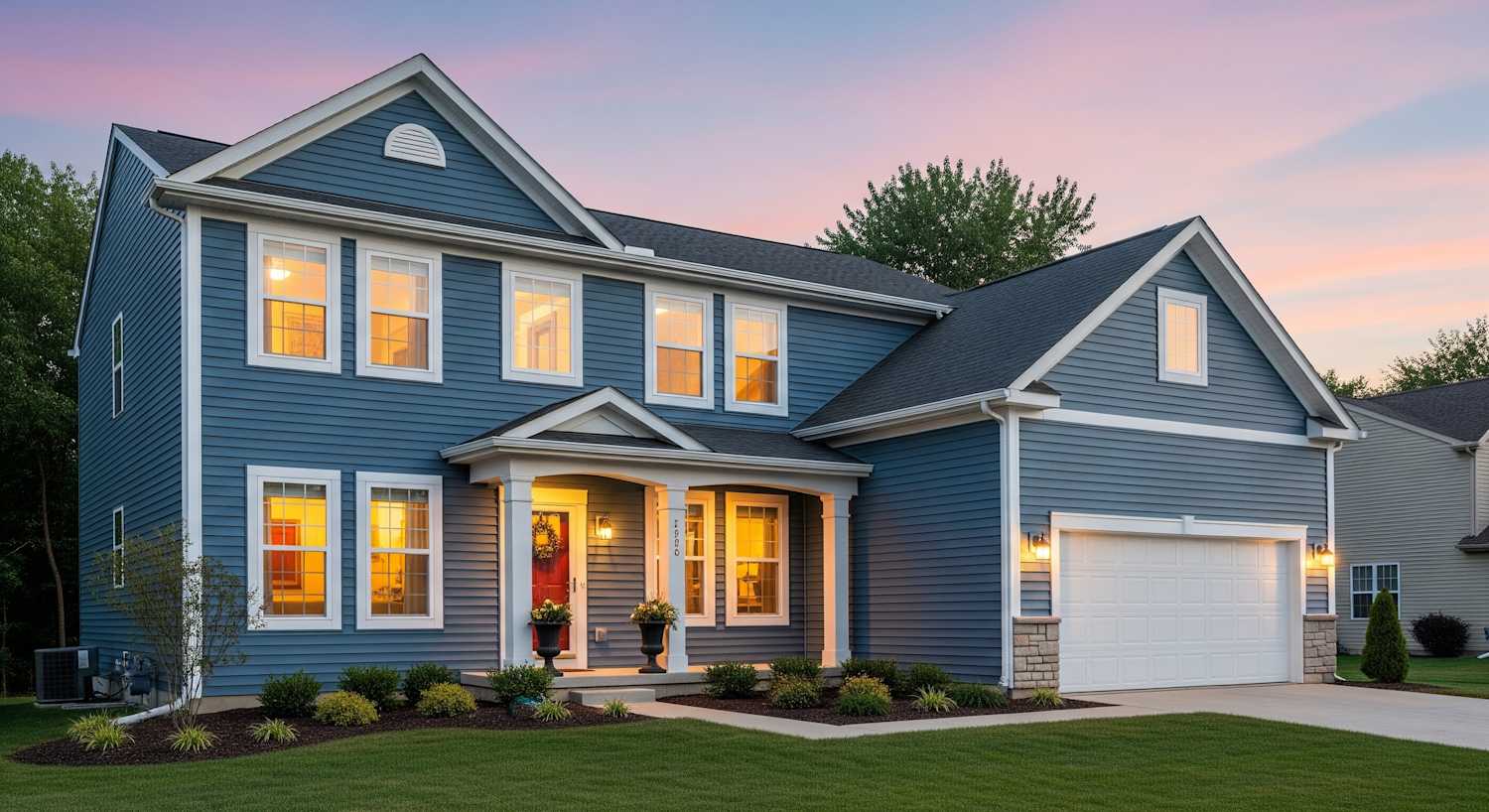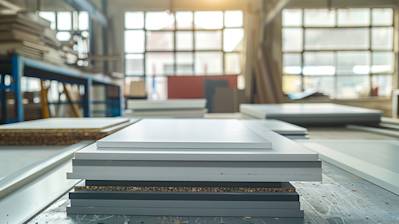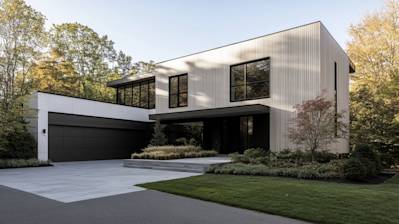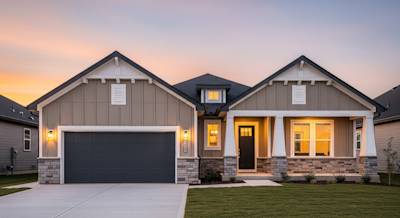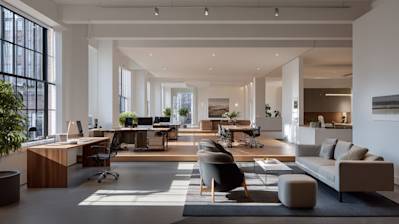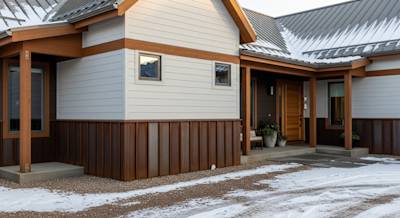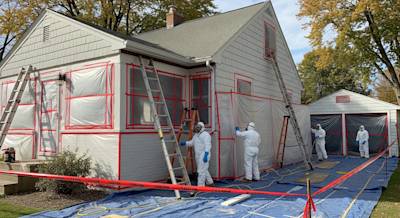Are you planning a home renovation project or developing your dream home from scratch? One critical decision you'll have to make concerns the type of siding you are going to use. With several kinds of siding available in today's market, this choice is far from easy. Install the right kind, and your structure could gain a life-long defense against elements, upgraded aesthetics, and significantly hiked property valuation. In this comprehensive guide, we unpack the options available to you, delving into various siding types that will help you make an informed choice.
Understanding Siding: The Basic Concept
Siding, in the simplest terms, is the protective, aesthetic exterior placed on a house or building. Primarily, siding plays a dual role. It serves as the first line of defense, protecting your structure from harsh weather conditions. Secondly, it defines the architectural aesthetic of your building, providing options that could accentuate your structure's ancient allure or modern sophistication.
Popular Siding Types for Your Home
Every homeowner has unique needs, preferences, and budget boundaries. As such, we are going to explore a range of siding options out there, each offering a distinct blend of durability, maintenance needs, aesthetic appeal, and cost.
Vinyl Siding
As the most popular siding choice in many locations, vinyl offers high versatility and affordability. It's easy to install, requiring little to no maintenance, and ideally lasts up to forty years. Available in different styles and colors, vinyl gives you myriad ways to customize your home's exterior.
Metal Siding
Metal siding, typically aluminum or steel, boldly stands out for longevity, durability, and environmental friendliness. It has a high resistance to pests, fire, and rot. The main drawback is that it dents easily and might appear less stylish compared to other sidings.
Fiber Cement Siding
James Hardie pioneered fiber cement siding, known for its fantastic mimicry of other materials. Resistant to pests, rot, and robust weather conditions, fiber cement requires minimal upkeep. Despite its higher price tag, it's a strong investment for homeowners aiming for a combination of beauty and durability.
Wood Siding
Wood siding offers undeniable timeless charm and natural appeal. It's eco-friendly and available in various styles, including clapboard, shingles, and shakes. However, it demands high maintenance to prevent damage from pests and water.
Brick Siding
Brick siding symbolizes an ancient look wrapped with outstanding durability. It withstands pests, fire, and harsh weather, requiring minimal maintenance. However, it's comparably more expensive to install.
Stucco Siding
Stucco siding, an age-old siding type popular in regions with arid climates, provides high durability and seamless resistance to fire. Made from lime, sand, and cement, it's quite affordable. Nevertheless, it requires frequent painting to sustain its aesthetic appeal.
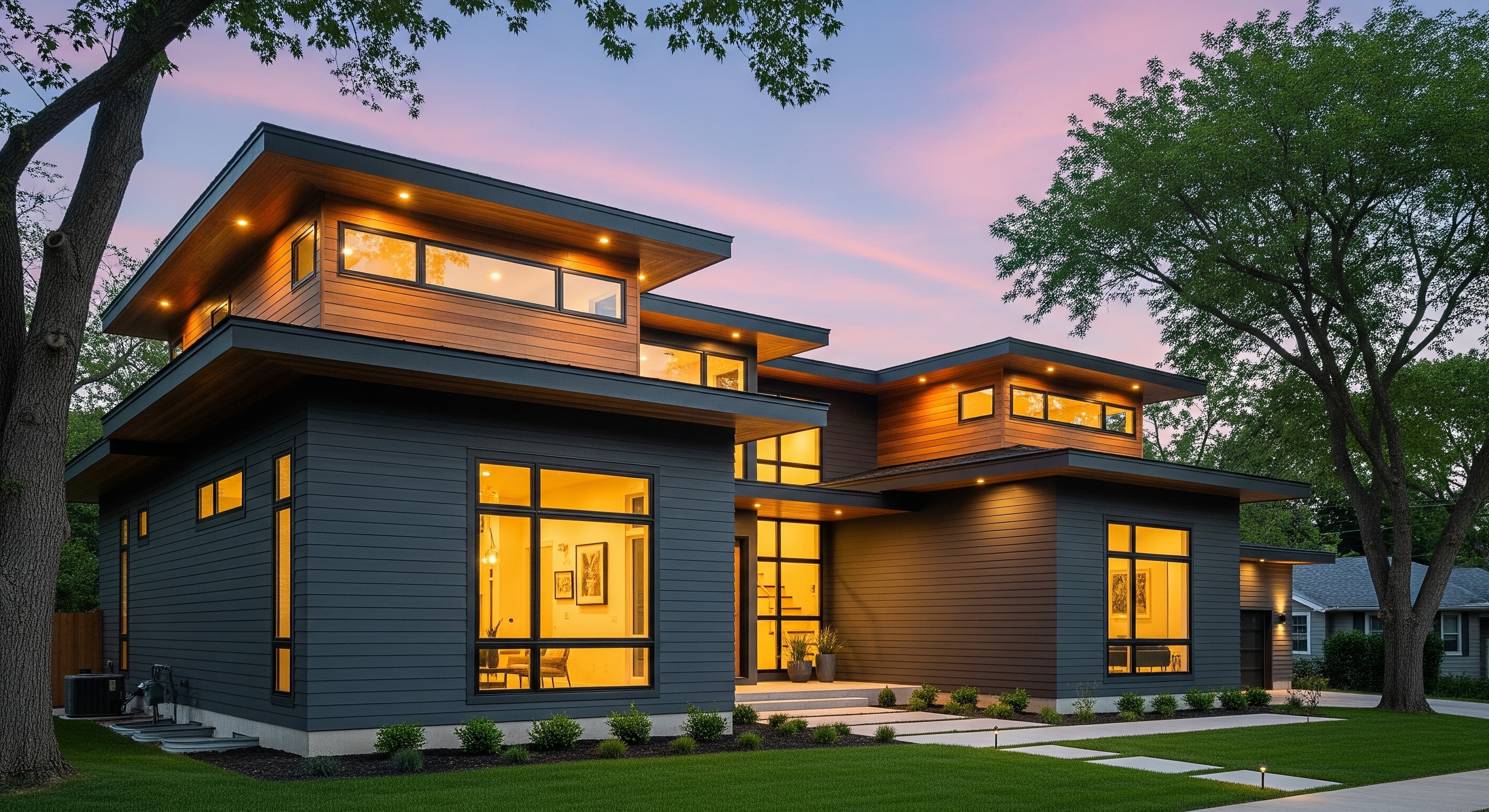
Frequently Asked Questions about Siding Types
Can you define Vinyl Siding?
Vinyl siding is a plastic exterior cladding used for weatherproofing and beautifying buildings. It's popular due to its affordable cost, easy installation, low maintenance, and wide range of color choices.
How about Wood Siding? What is it all about?
Wood siding is a traditional and timeless option that gives a natural, classic look to your property. It’s popular for its beauty and the character it adds to a home. However, it requires regular maintenance to prevent damage from insects, rot, or harsh weather.
What is included in Brick Siding?
Brick siding is strong, durable and offers a distinct aesthetic appeal. It is fire-resistant, provides excellent insulation, and rarely requires painting or upkeep. The installation can be a bit pricey as it necessitates experienced bricklayers.
Can you elaborate on Fiber Cement Siding?
Fiber cement siding is a versatile and resilient material that replicates the appearance of other siding types like wood, stucco or stone. It is fire and termite-resistant, handling adverse weather conditions pretty well. High-quality fiber cement siding can last a long time with little maintenance.
Let's talk about Stucco Siding.
Stucco siding is a durable and aesthetic option often used in hot, arid climates. It is composed of cement, sand, lime, and water, providing excellent durability and resistance to severe weather. It demands professional installation to ensure it correctly adheres and lasts long.
What are the characteristics of Stone Siding?
Stone siding gives your home a natural, robust and elegant look. It is fire-resistant, durable, and requires minimal maintenance. Natural stone can be expensive and requires professional installers. There are, however, more affordable options like stone veneer.
What are some less common types of siding?
Less common types of siding include metal siding, often made from aluminum or steel, and glass siding, which is typically used for modern, architectural design concepts. Another uncommon siding type is composite siding, made from a mixture of materials for enhanced durability.
How should I choose between different types of siding?
Choosing between different siding types should depend upon your specific needs, budget, aesthetic preference, and climate conditions. Consider factors like durability, maintenance requirements, cost, and the overall look and feel you want for your property.
Is there a siding type that requires least maintenance?
Vinyl and fiber cement siding typically require the least amount of maintenance. They are resistant to common issues like rot and insect damage, and only require cleaning occasionally.
How long does each siding type typically last?
The lifespan of a siding type largely depends on the material and maintenance. Brick and stone sidings have the longest lifespans, easily lasting a lifetime with minimal maintenance. Vinyl and fiber cement can last between 25-50 years, while wood siding typically lasts about 20-40 years depending on its upkeep.
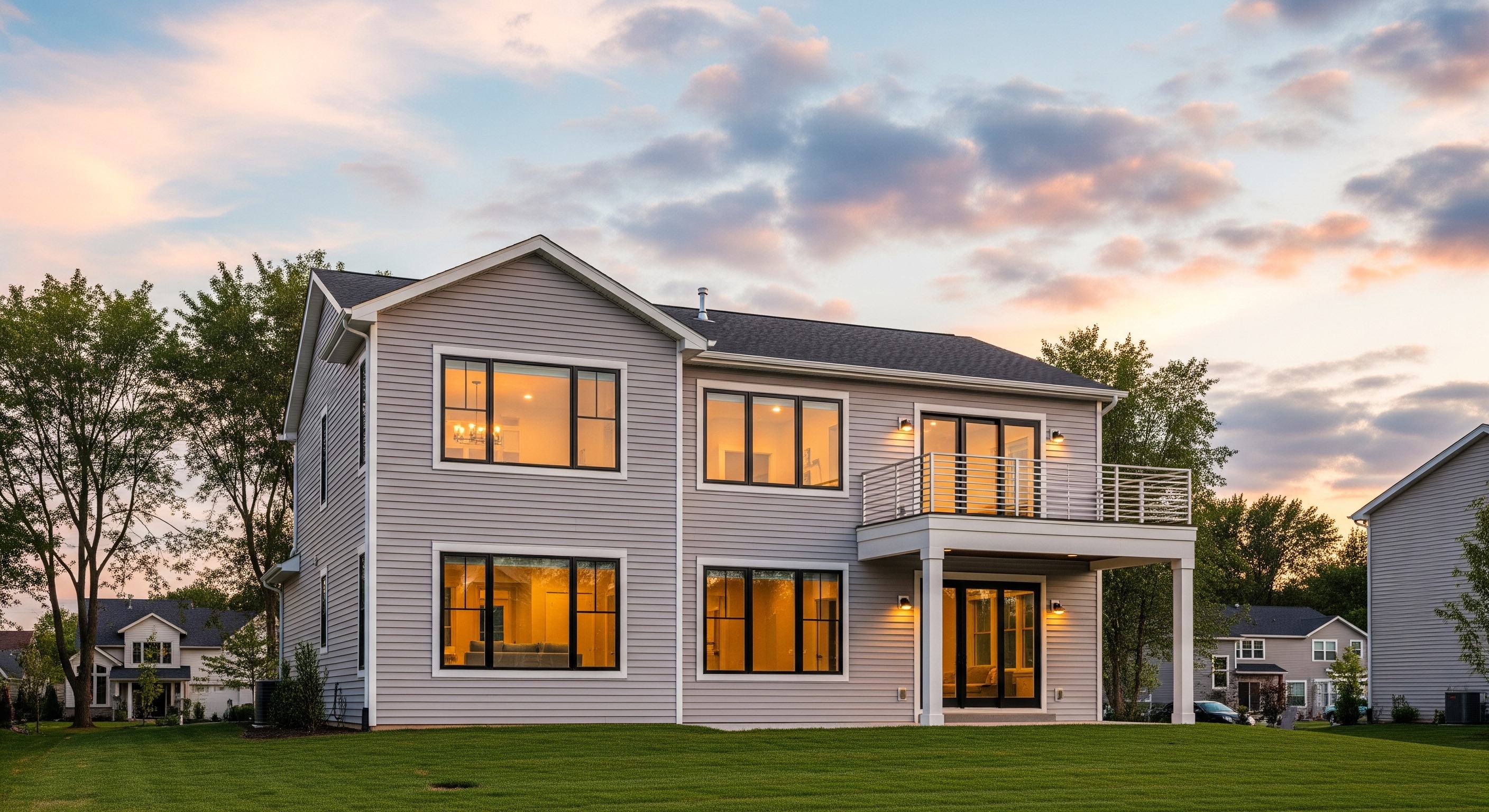
Vinyl Siding
Pros
Cost-Effective
Vinyl siding is a popular choice for many homeowners because it is relatively inexpensive compared to other siding materials. It’s a cost-effective way to give their exterior a fresh, new look without blowing a hole in the budget.
Low Maintenance
Vinyl siding is designed to endure harsh weather elements, resist mold and mildew, and it will not rust or thin out. Thus, in terms of maintenance, vinyl siding requires simply a good wash with a water hose once a year.
Variety of Colors and Styles
For homeowners wanting a range of options to choose from, vinyl siding comes in a variety of colors, textures, and profiles to give you complete versatility in designing your dream exterior.
Cons
Durability
While vinyl siding is designed to withstand many types of weather conditions, severe and extreme weather can cause it to crack or become warped.
Repairs
Even though vinyl is generally durable, if a panel gets damaged, you usually can't repair just one spot. You'll need to replace the whole section which can be expensive and time-consuming.
Eco-friendliness
Vinyl siding manufacturing and disposal contribute to pollution. It’s not an eco-friendly material.
Wood Siding
Pros
Aesthetic Appeal
Although it requires a bit more upkeep than other types, wood siding is often chosen for its rich, natural look and texture. It adds a certain charm that no other siding can match.
Customizable
With wood, you can pick from a variety of types including cedar, pine, spruce and redwood. It can be painted or stained in an almost infinite variety of colors.
Insulation Properties
Wood siding also has good insulation capacities, which can help to keep your home warm in the winter and cool in the summer.
Cons
High Maintenance
Wood siding requires quite a bit of maintenance. Expect to repaint or stain wood siding every 3 to 7 years, and to have to caulk it to prevent water damage.
Durability
It can be prone to rot, insects, and woodpeckers can damage the exterior.
High Cost
Wood siding is typically among the most expensive siding options, which can put it out of reach for certain homeowners.
Brick Siding
Pros
Durability
Brick siding is extremely durable and can last for decades. It’s not susceptible to termites or rot, and it won't warp or fade over time.
Low Maintenance
Once installed, brick requires little in the way of maintenance - periodic washes can keep it looking fresh.
Fire Resistant
As a non-combustible material, brick siding offers superior fire protection compared to other types of siding.
Cons
High Cost
Brick is one of the most expensive types of siding. However, it makes up for the initial cost with its durability and low maintenance.
Limited Color Choice
While there are different varieties of bricks, the color options are significantly limited compared to other siding types.
Difficult Installation
Brick siding installation is a labor-intensive process that requires professional expertise. It's not a DIY friendly job.
Fiber Cement Siding
Pros
Engineered for Durability
Fiber cement siding is built to resist common hazards, including fire, wind, termites, and rot. It is highly durable and can last for years with minimal maintenance.
Aesthetics
It can be manufactured to mimic the look and texture of wood, brick, or stone.
Variety of Choices
This type of siding is available in a range of colors, styles, and finishes.
Cons
Expensive
While fiber cement siding is less expensive than natural wood, it is more costly than vinyl or aluminum siding.
Heavy
Fiber cement siding is quite heavy. This doesn't just mean it might cost more to ship, but it could take longer to install, which also drives up cost.
Requires Periodic Painting
Fiber Cement requires painting every 10 to 15 years, depending on the brand and installation. It’s important to factor in not just the cost of painting, but also the cost of professional cleaning and re-caulking.
Myths and Misconceptions About Siding Types
When it comes to home renovation and improvements, siding often becomes a key topic of conversation. Like any other component of home remodeling and construction, there are a handful of myths and misconceptions about siding types that have been circulating over the years. This duplicitous information can make it challenging to make an informed decision. In this section, we aim to debunk and explain the most common myths and misconceptions to shed light on the facts behind siding types.
Myth 1: All Sidings Require the Same Amount of Maintenance
Misconception
Many homeowners believe that regardless of the type of siding they choose - be it vinyl, wood, metal, or fiber cement - all sidings require the same level of maintenance.
The Reality
Different types of siding indeed have varying upkeep requirements. For example, wood siding requires a high level of maintenance as it periodically needs to be painted, stained, or sealed. Conversely, vinyl is relatively low-maintenance, only needing occasional washing to keep it looking its best. Always understand the maintenance commitment of a siding type before making a final decision.
Myth 2: Vinyl Siding is Cheap and Low Quality
Misconception
Some people have developed the notion that vinyl siding is a 'cheap and low-quality' option that will degrade rapidly over time.
The Reality
While it's true that vinyl siding can be less expensive than other siding types, it is by no means a poor-quality choice. In fact, modern vinyl siding is engineered to be durable and resistant to various elements. Its affordability combined with the advantages it offers makes it a popular choice among homeowners.
Myth 3: Fiber Cement Siding is Not Environmentally Friendly
Misconception
Many believe that fiber cement siding takes a heavy toll on the environment because of its manufacturing process and the inability to recycle it.
The Reality
Most fiber cement manufacturers are dedicated to sustainable practices. Many fiber cement sidings are made of recycled and sustainable materials and require less energy to produce than other types of siding. Moreover, many manufacturers have taken steps to reduce the environmental impact of production, making fiber cement siding a viable green option for those concerned about environmental impact.
Myth 4: Metal Siding is Only for Industrial Buildings
Misconception
The assumption that metal sidings are only suitable for industrial buildings or warehouses is common.
The Reality
This could not be any further from the truth. While metal siding is indeed used often in industrial applications due to its strength and durability, it's also suitable for residential use. Metal siding is a versatile material that comes in a variety of styles and finishes to match any home style.
Myth 5: All Siding Types Offer the Same Amount of Insulation
Misconception
A common belief among homeowners is that all siding types provide the same level of insulation for their homes.
The Reality
Insulation largely depends on the particular siding type. For instance, insulated vinyl siding is specifically designed to improve insulation, whereas standard vinyl, wood, or aluminum siding may not offer the same level of thermal efficiency. It's important to consider the insulation properties of each siding type to understand how it can affect your energy costs.
Myth 6: The Cheapest Siding Option is the Best
Misconception
Many homeowners believe that the cheapest siding option is the best one, as it saves them money upfront.
The Reality
While it might be tempting to choose a siding option based solely on upfront cost, this approach can end up costing you more in the long run. Cheaper siding options might not be as durable or resist weather and degradation as well as high-quality, more expensive options, potentially leading to more frequent replacement or repair costs in the future.
By debunking these myths and misconceptions about siding types, homeowners can make well-informed decisions. Always remember to consider all aspects - from maintenance and installation costs to the siding’s lifespan and insulation abilities – before deciding on a siding type for your home.
Summary
You're probably feeling more confident in knowing your options when it comes to siding types. There are a multitude of choices available; from vinyl, wood, fiber cement, all the way to stucco and metal, each siding has its own benefits and drawbacks. For instance, if you're someone who values budget-friendly options, then you would steer towards vinyl as it offers great durability for less money.
But, if you're a fan of the classic aesthetic of old wooden houses, then you'd absolutely delight in wood sidings. They truly give off a vintage vibe. However, they come with the cost of higher maintenance. Meanwhile, fiber cement gives you the looks of wood but lowers the upkeep cost. If the veneer of stucco or metal sidings are interesting to you, then remember they also have their own set of pros and cons; stucco is pretty resistant to fire and sound, while metal is low on maintenance and offers recyclability.
Regardless of the siding types you plan to install, it's key that you pair them with your specific needs and goals, not just in terms of price, but also in long term value. Choosing the right siding can do more than just look good, it can also save money and add value to your house. After all, siding is more than just external aesthetics, it’s about building a home that makes you delighted to live in.
About US Quality Construction of Lexington
US Quality Construction of Lexington is a top-notch construction company hailing from the charming city of Lexington, KY. We pride ourselves on our commitment to excellence and unwavering attention to detail. Started by a team of construction enthusiasts who sought to bring a new standard of quality to the local construction landscape, we've built our reputation on transparent pricing, superior workmanship, and outstanding customer service. We specialize in an array of construction services, delivering exceptional results across commercial and residential projects. Whether it's renovating your office or building a brand new home, you can trust us because when we say quality, we mean it!
Tags: home improvement, exterior design, siding materials,
